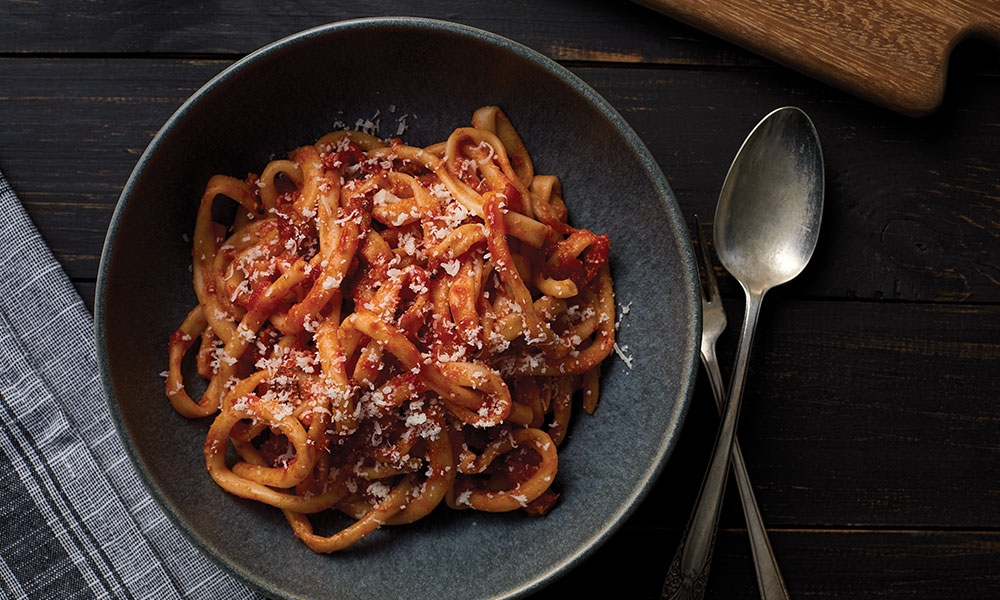
A perfect pasta to honor Sts. Peter and Paul
In the year 42, a fisherman from Galilee arrived in Rome, then the congested capital of a vast empire. He likely took up residence in the Jewish section of the pagan city’s poor neighborhoods. He would leave Rome twice before his final return in A.D. 62.
In the year 42, a fisherman from Galilee arrived in Rome, then the congested capital of a vast empire. He likely took up residence in the Jewish section of the pagan city’s poor neighborhoods. He would leave Rome twice before his final return in A.D. 62.
That fisherman, despite his humble appearance, was none other than the Apostle Peter, the Vicar of Christ. The Son of God had appointed him head of the Church and entrusted him with the mission of feeding God’s flock.
Meanwhile, across the Mediterranean, a former Pharisee and persecutor of Christians had received and responded to the divine call. Paul, himself a Roman citizen, would undertake three difficult journeys in service of the Gospel before his arrest.
Finally, in the year 67, these “Princes of the Apostles,” now both in Rome, were tried for preaching Christ and condemned to death. Paul was beheaded on the Ostian Way; Peter, considering himself unworthy to die in the same manner as his Lord, was crucified upside down on Vatican Hill.
Thankfully, the story doesn’t end there. “The blood of martyrs is the seed of the Church,” theologian and early Church Father Tertullian famously wrote. Sts. Peter and Paul had labored generously to sow the seeds of faith in remote corners of the Mediterranean and in Rome itself; now they watered those seeds by their blood. Although fierce persecution of Christians would continue throughout the empire for two centuries, the indomitable little seed would burst forth nonetheless. The courage of the martyrs – those known and unknown – to die rather than to deny Jesus Christ would be an indisputable witness to the truth of the Gospel.
Thus, in the “Eternal City,” we are reminded of God’s abundant blessings on his Church: the generosity of the martyrs, the strong foundation of the Apostles, and the unity which flows from fidelity to the Successor of Peter, the pope. As we celebrate the feast of Sts. Peter and Paul on June 29, pay a “visit” to the city of their martyrdom with a classic Roman pasta dish.
Pasta Amatriciana
Ingredients
- 11 oz. bucatini pasta
- 1 cup thick-cut bacon, chopped into strips
- 1 28 oz. can whole, peeled tomatoes
- ¼ cup pinot grigio or other white wine
- ⅓ cup grated pecorino romano, more for garnish
- Chili flakes, salt/pepper to taste
Directions
In medium pot or deep saucepan, add chopped bacon. Bring pan to medium heat, cook until crispy.
Add white wine and deglaze, letting alcohol evaporate. Remove crisped meat and set aside, keeping rendered fat in pan.
While meat is cooking, bring large pot of water to boil, add salt.
Mash tomatoes by hand or with fork, add to pan with bacon fat. Add pepper flakes and pepper to taste, along with a little salt (accounting for added saltiness of the meat and pecorino). Cook sauce on medium low for 20-25 minutes until reduced and thickened.
Halfway through reducing sauce, add pasta to boiling water. Cook until just before al dente; it will finish cooking in the sauce. Drain.
Add pancetta back to thickened sauce, then add pasta. Mix together until sauce absorbs into pasta. Add pecorino romano and mix again.
Remove from heat, serve immediately with additional cheese.



